Cab types and dimensions
|
This is an attempt to keep some interesting data and an excellent photo collection of cab types from being lost because they are buried in this thread called "C&S #30, a C-16 conversion"
http://c-sng-discussion-forum.41377.n7.nabble.com/C-amp-S-30-a-C-16-conversion-td15055.html Maybe we can continue cab-related posts here. thanks, John
John Greenly
Lansing, NY |
|
This post was updated on .
Thanks for creating this thread, John.
Keith's right. As a group we're not very proactively organized, many of our discussions veer off in unexpected directions, with some neat information that is shared, some very useful for future reference, that becomes hard to find. Henceforth, I will confine my musings about the evolution of C&S narrow gauge cabs to this thread and only share my progress with my C-16 rebuild on the other. To answer some questions from the other thread: Keith asked about this photo: 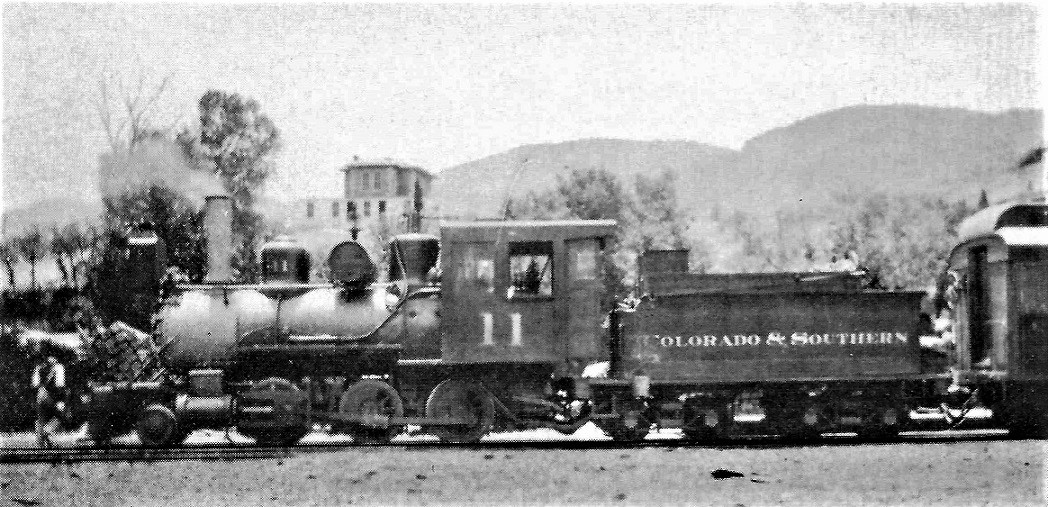 I scanned it from a tiny photo in the Klingers' C&S Clear Creek Memories . . . and played around with it until it was somewhat discernable. C&S number 11 is at Morrison with one of the passenger trains. It is the only photo that I've ever seen of number 11. Dated to 1910. Paul asked: You are all doing an excellent job of giving the rest of us the correct sizes for our locos; a question: Are the cabs on the Overland Sn3 locos correct and for what period? Thanks for any help. Paul's question as to the cab measures on the Sn3 Overland C&S locomotives begs another question: Compared to what? The only reference as to the measures of the "modern" C&S cabs might be found in the folio sheets of 1903 that describe the rebuilt Cooke 2-6-0s: 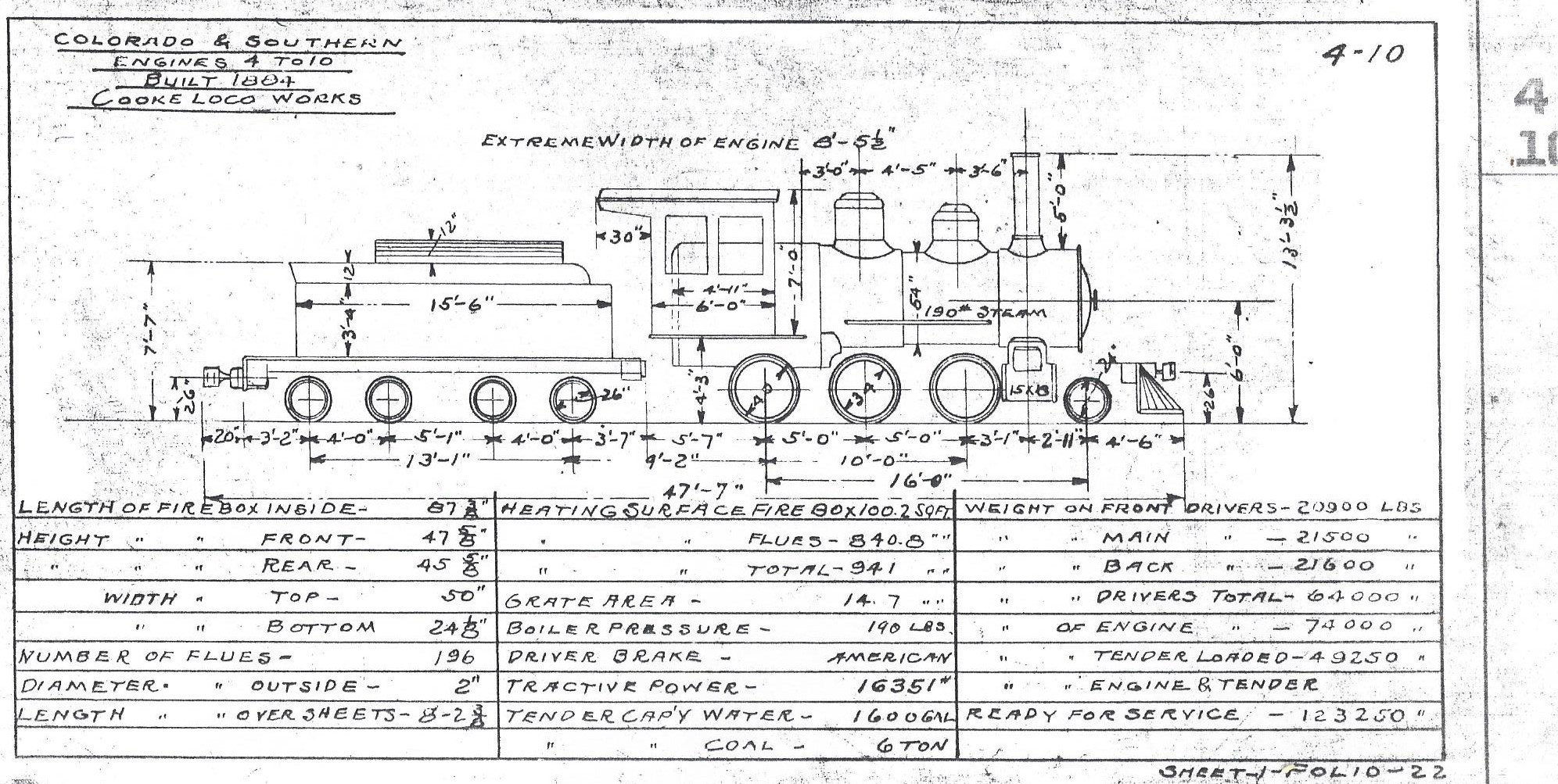 I've come to suspect that these cabs of 1900-1902 were the base prototype for all the "modern" cabs that were constructed for the locomotives at subsequent shopping's in the first decades, whether the new cabs were wood with sheet metal sheathing or, later, all steel construction. Since I have collected at least one of the OMI C&S locomotives produced, I spent some time today measuring my cabs (CL = cab length, CH = height of side, CW = cab width). Rebuilt Cooke 2-6-0s, B3-C (OMI numbers 5, 6, 8, 9) - all second run models: CL = 6' 1", CH = 6' 5", CW = 8' 4" Brooks 2-6-0, B3-B (OMI numbers 21-22) - both second run models: CL = 5' 2". CH = 5' 8", CW = 7' 7" Rhode Island 2-8-0, B4-C (OMI number 60) CL = 6' 0", CH = 6' 5" (7' 1" from floor to peak of roof); CW = 8' 4" Baldwin 2-8-0, B4-D (OMI numbers 65, 69 and 70) CL = 5' 10", CH = 6' 4", CW = 7'10" Baldwin 2-8-0 B4-E (OMI number 71) CL = 6' 0", CH = 6' 5" (7' 1" from floor to peak of roof); CW = 8' 4" Note that OMI numbers 60 and 71 were both imported at about the same time and share the same cab dimensions. My rebuild of the PFM C-16 to number 47: Cooke 2-8-0, B4-B CL = 5' 11", CH = 6' 1", CW = 8' 2" All of the Sn3 OMI imports, excepting the two Brooks locomotives, have cab dimensions within an inch or two of the folio dimensions of the rebuilt Cooke 2-6-0s. Since OMI 9, 60, 71 probably used field dimensions from those three locomotives on display, I think it safe to say that all the modern C&S cabs were all derivatives of the Cooke rebuild cabs. But what about the two OMI Brooks 2-6-0s, numbers 21 and 22? These second run locomotives were the last Sn3 C&S locomotives that were imported by Overland in 1994. The cab dimensions of the models matches the 1903 Folio drawings exactly. As these two models could not be measured in the field, OMI relied on the Folio, just as Key had done with their HOn3 2-6-0 number 22. The Brooks models IMO are accurate in cab dimensions only for the first decade or so. The number 22 model has 3-pane windows, and only accurately portrays 22 in its last couple of years:  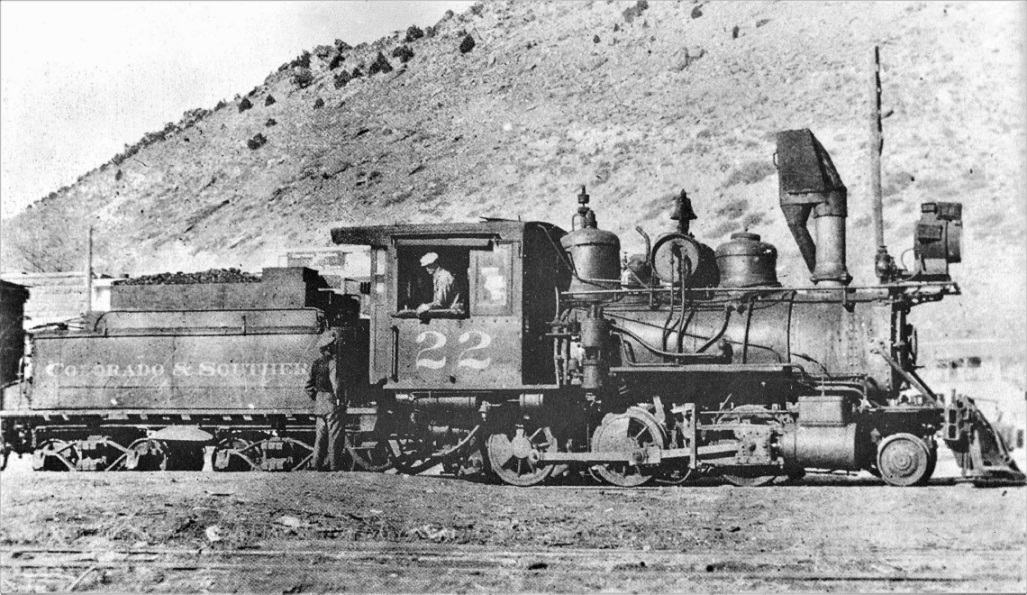 1924 at Morrison John can confirm the measures with his computer, but I suspect that this last cab on C&S 22 was a larger "modern" cab. (some have suggested that this late cab on 22 was actually the cab from sister 21, scrapped just a couple of years earlier). The cab on Overland's 21 is supposed to match the 1918 Otto Perry photo: 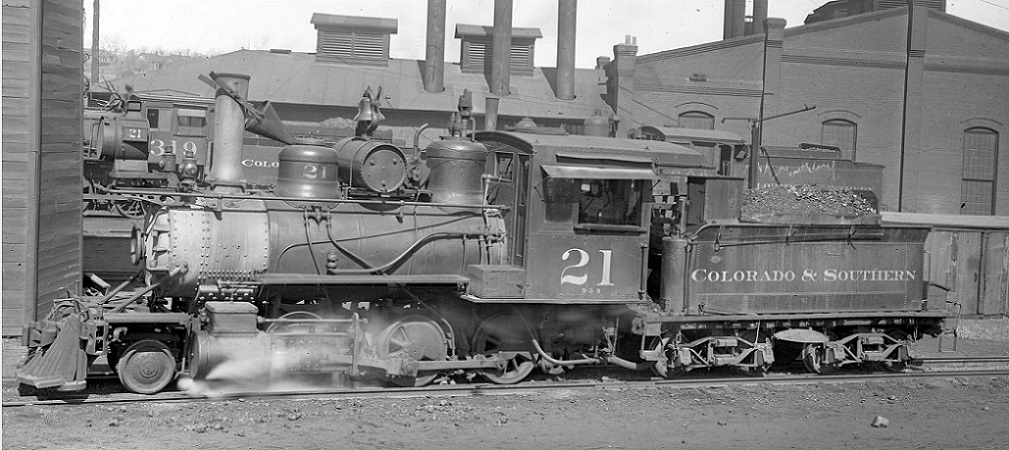 John has already shown us that the cab dimensions in 1918 suggest a larger "modern" cab. The Overland 21 cab is correct in dimensions to the first decade cab that 21 carried until 1912, and looked like this Como photo with Sam Speas behind the throttle: 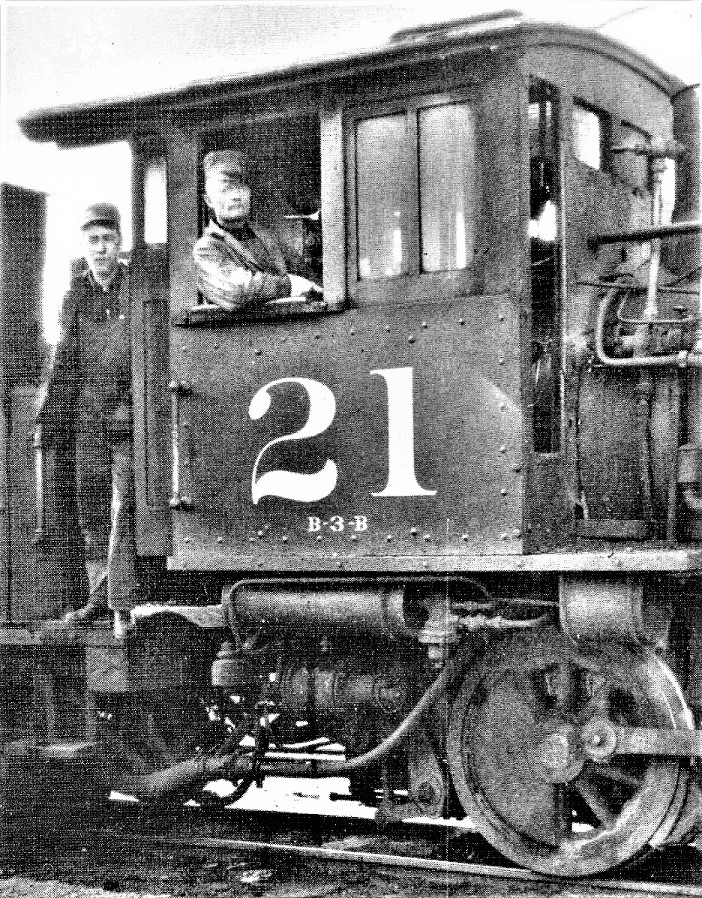 In Klingers' C&S High Line Memories . . . For my 1909 C&S 21, I will be using the Overland cab, modified back into a 2-window cab, and add the clerestory vent on the cab roof. Why do I think that the new and larger 3 pane cab showed up on number 21 in 1912? In August of that year, number 21 derailed on the Blackhawk-Central switchbacks, and rolled down the mountain above Blackhawk: 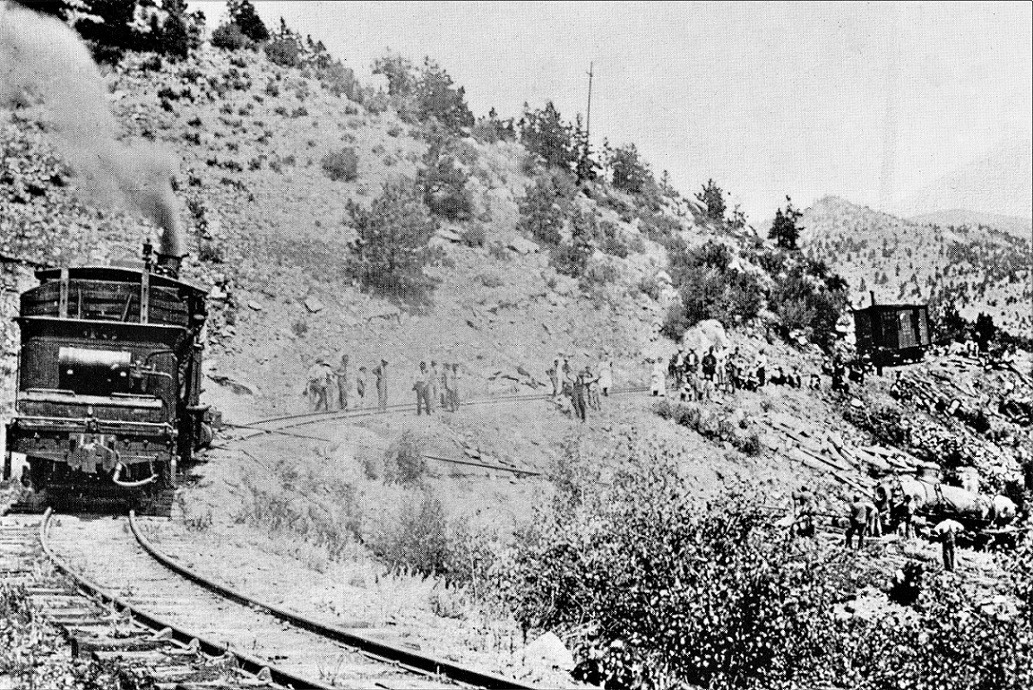 In Grandt's Narrow Gauge Pictorial I suspect that 21 acquired the larger, modern cab, as in the Otto Perry photo, during the subsequent rebuild. I do believe that the two Overland Brooks 2-6-0s, with the smaller cab dimensions, could be used as a basis for modeling the non-rebuilt Cooke 2-6-0s, class B3-A, numbers 11, 12, 13. One would have to remove the outside injectors and connections to the steam dome, otherwise the cabs could be easily modified and the domes are similar. I think any of the Overland 2-8-0s is pretty much accurate from about 1920 onward, at least in terms of cab dimensions, windows, etc. The 2-8-0 cabs are so similar in size that cab swapping between the 60, 65, 69, 70 and 71 is possible. A 65 model with a 71 cab could be the start of a good number 68. Conversely a 71 model with a 69 or 70 cab could be the start of a 72 or 73, the tenders of all three of the B4-Es were longer and similar in the 1920s and 1930s. Remember also that boiler dimensions were similar between the B4-Cs, B4-Ds and B4-Es, and any Overland 2-8-0 can be the basis for a 2-8-0 of any of the three classes. In example, the Overland number 71 2-8-0 can be the basis of some first decade locomotives, as long as you choose a prototype with a larger, "modern" cab with 2-pane windows, like: 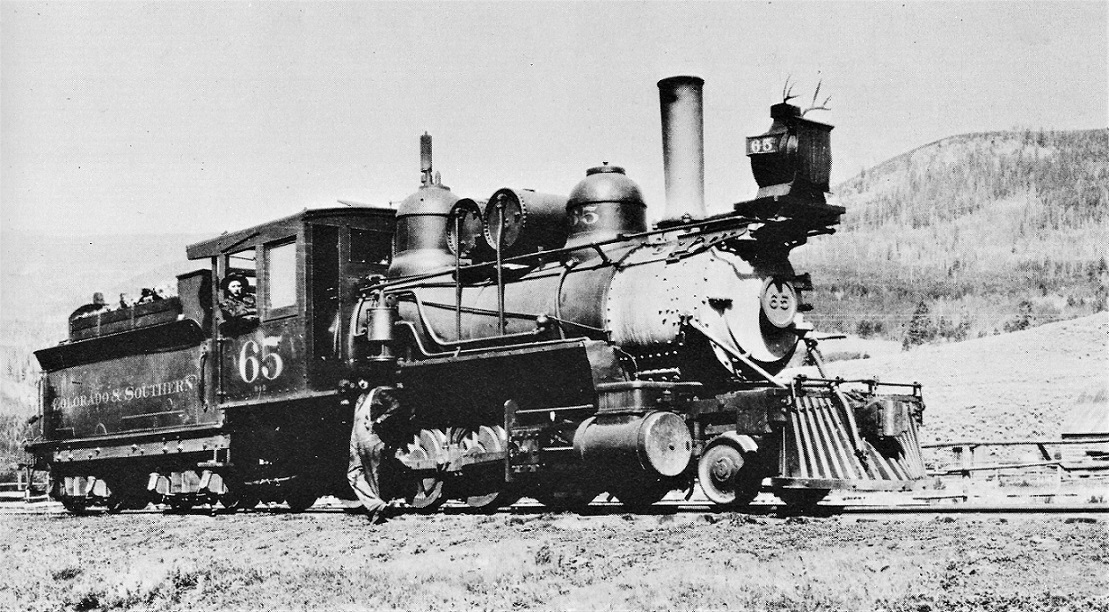 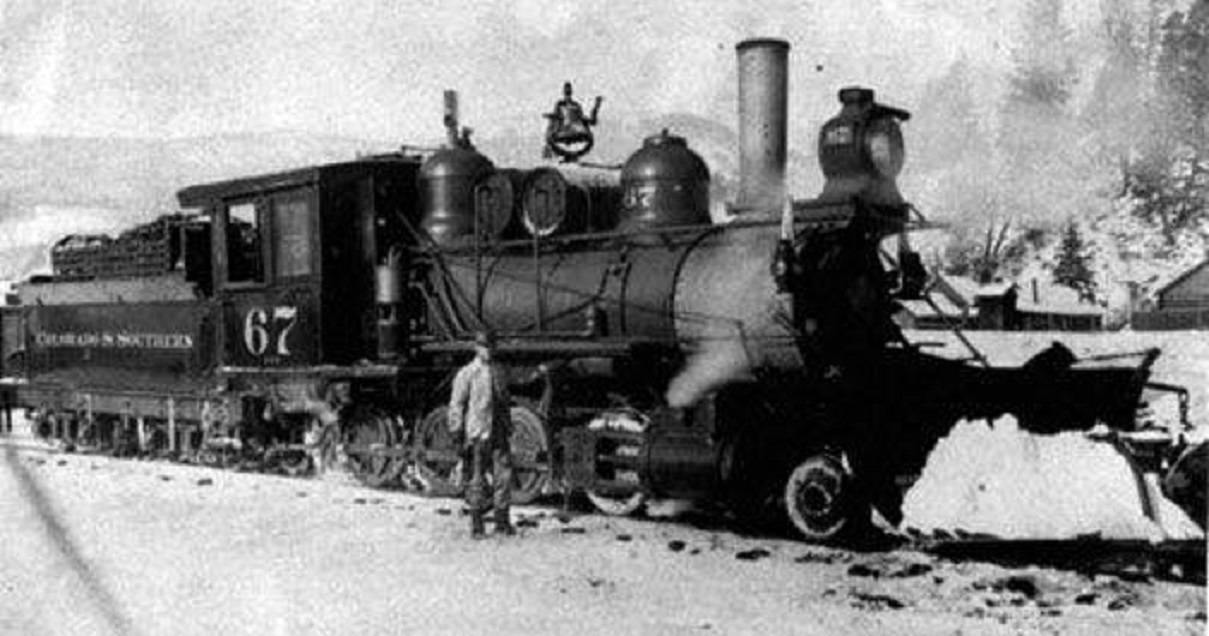 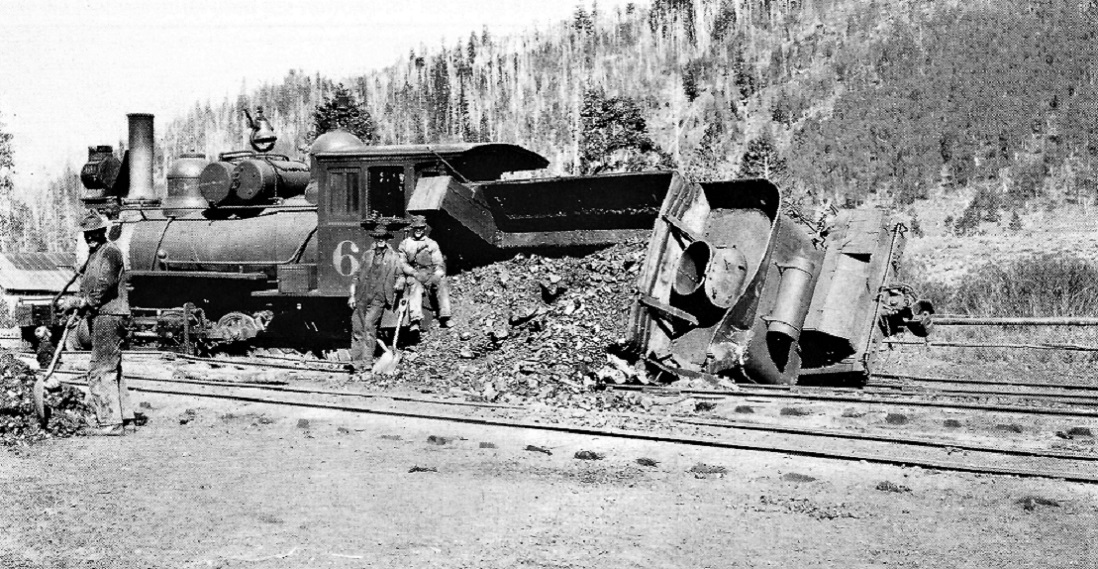 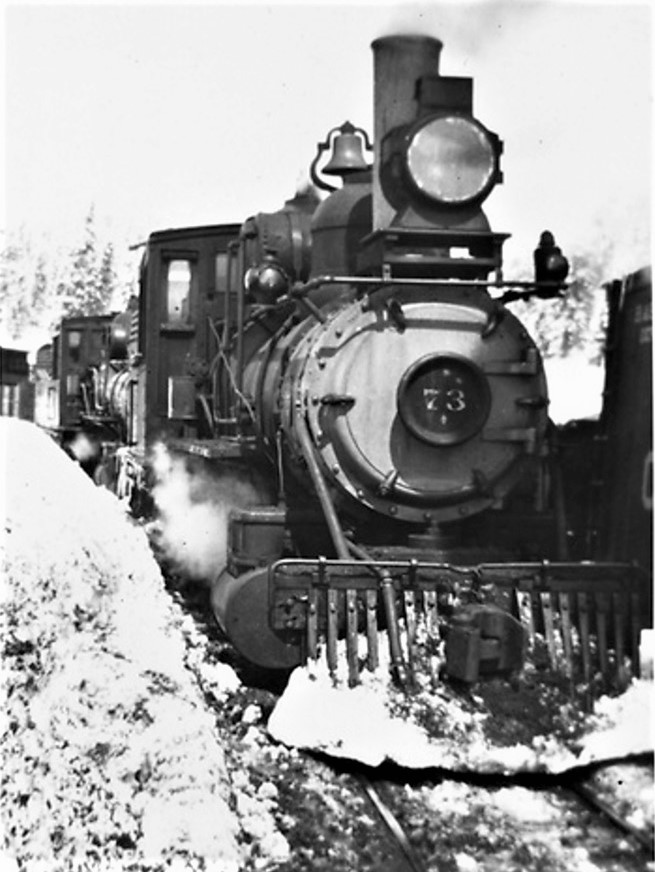 Of course smoke box fronts, air tanks and tenders all varied from engine to engine and are all problematic -- YMMV. Hope this info is helpful, I still have some more thoughts on the evolution of the C&S locomotive cabs to share next time. Jim PS -- In the medical / pharmaceutical professions, when "mil" is verbally spoken it refers to a measure of liquid volume, the milliliter. Thirty milliliters makes a single fluid ounce and, if lime and salt are added, a perfect shot of tequila.
Jim Courtney
Poulsbo, WA |
|
Wow, thats an overload of information for me to absorb, so they are correct unless you wish to stick to a narrow time period. That means I will not have to make any adjustments, which is good, thanks for all those extra photos and your work Jim. Paul R.
|
|
Paul, what time period are you interested in?
Jim Courtney
Poulsbo, WA |
|
Jim,
That is a complicated question-On my home layout(permanent)which is HO I have on the bottom level Victorian Railways-"Moe"etc, Middle level-Dunsmuir(Southern Pacific) and a dual gauge area , above that is to be C&S ( still unfinished)section . In Sn3 I have a portable layout with Hancock and Romley with an added section which I call South Park, which has some dual gauge. Time period varies I like the DSP&P period don't have much , and the C&S Have not settled on that probably will settle on what I have in rolling stock.In Sn3 I have 69,22,71,21,60,74,D&RGW223,346, and a few other kits in various stages in DSP&P. The Home layout is about 22ftx12ft.At this stage I have been sidetracked building a small traction portable layout( Pacific Electric or local) As I said I am a very mixed up modeller!!! Paul R. |
«
Return to C&Sng Discussion Forum
|
1 view|%1 views
| Free forum by Nabble | Edit this page |

